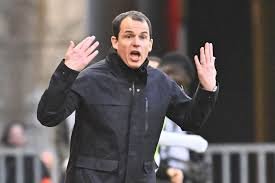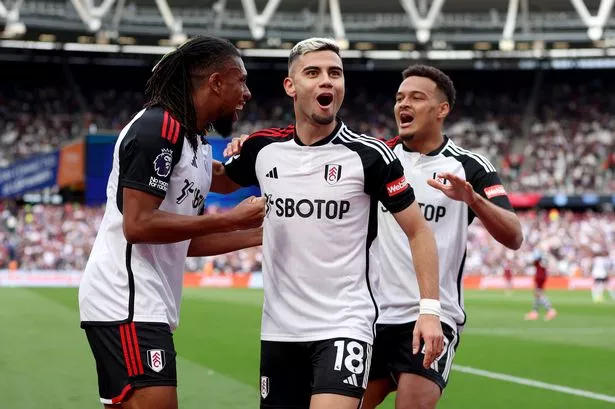Sunderland, a club with a storied history in English football, has been actively pursuing a transfer for a particular player, but their efforts have so far been unsuccessful. Despite making multiple offers, the club in question has rejected Sunderland’s bids, with the latest offer amounting to €11 million. This scenario highlights several key aspects of football transfers, including the dynamics of negotiations, the influence of player desires, and the strategic considerations of the clubs involved.
The Transfer Process
In football, transfers often involve complex negotiations between clubs, players, and their representatives. Sunderland’s pursuit of the player is a clear indication of their interest in strengthening their squad. The club’s strategy typically involves making offers that they believe reflect the player’s market value and their budget constraints.
Sunderland’s offers, culminating in a final bid of €11 million, suggest a serious commitment to acquiring the player. Such bids are usually based on a combination of the player’s performance, potential, and how well they fit into Sunderland’s tactical plans. However, the club receiving the offers has opted to reject these bids, indicating that they value the player more highly or have other strategic reasons for not accepting the transfer.
Club’s Rejection
The decision to reject Sunderland’s offers can be attributed to several factors:
- Player Value: The club may believe that the player’s current market value exceeds the amounts offered by Sunderland. This can be influenced by the player’s recent performances, potential future contributions, and their role within the team.
- Strategic Considerations: The club might be unwilling to let go of the player due to their strategic importance. This could be related to the player’s impact on the team’s performance, their potential for future success, or the lack of a suitable replacement.
- Negotiation Tactics: Sometimes, clubs use rejection as a negotiation tactic, intending to drive up the offer or create more favorable terms. By rejecting initial bids, the club might be aiming to test Sunderland’s resolve or extract more favorable conditions in a potential deal.
- Contractual and Financial Factors: The player’s current contract terms and the financial implications of their transfer can also play a role. If the player is under a long-term contract or if there are substantial financial considerations, the club might be reluctant to let them go without meeting specific conditions.
Player’s Desire to Leave
The player’s expressed desire to leave adds another layer of complexity to the situation. When a player publicly or privately indicates their wish to move, it can influence negotiations in several ways:
- Pressure on the Club: The player’s desire to leave can put pressure on the club to consider offers more seriously. The club may eventually have to weigh the benefits of retaining a player who is unhappy or pushing for a move against the potential financial and strategic gains from a transfer.
- Impact on Performance: An unsettled player might experience a decline in performance or morale, which could impact the team’s overall performance. In such cases, the club might consider a transfer as a way to resolve the situation and reinvest the funds into a player who is fully committed.
- Market Dynamics: The player’s desire to leave might also influence the market dynamics. Other clubs could become interested in the player, potentially driving up the price or leading to a bidding war. This can affect Sunderland’s position and strategy in the negotiations.
Sunderland’s Position
For Sunderland, the process of making multiple offers and eventually presenting a bid of €11 million reflects their serious interest in the player. The club’s strategy likely involves assessing the player’s potential impact on their squad and determining whether the financial outlay is justified.
Sunderland’s efforts to secure the player show their commitment to improving their team, but the ongoing rejection signifies that negotiations are far from straightforward. The club will need to carefully evaluate their next steps, which could include revising their offer, exploring alternative targets, or reassessing their transfer strategy.
Future Developments
The situation remains fluid, with several possible outcomes:
- Revised Offer: Sunderland might decide to increase their offer or include additional terms to meet the club’s demands. This could involve offering more money, adding performance-based clauses, or including players in part of the deal.
- Alternative Targets: If negotiations fail, Sunderland might shift their focus to other potential transfer targets who can fill the desired role. This could involve scouting for alternative players or adjusting their transfer strategy to align with their budget and needs.
- Player’s Future: The player’s future will also be influenced by how the situation unfolds. If they continue to push for a move, the dynamics of their relationship with their current club might evolve, potentially affecting their standing and performance.
The ongoing transfer saga involving Sunderland and the player highlights the complexities of football transfers. Despite Sunderland’s serious efforts and significant bid, the club’s rejection underscores the intricacies of negotiations, player value, and strategic considerations. As the situation develops, it will be crucial to monitor how Sunderland adjusts its approach and how the player’s desire to move influences future decisions.










